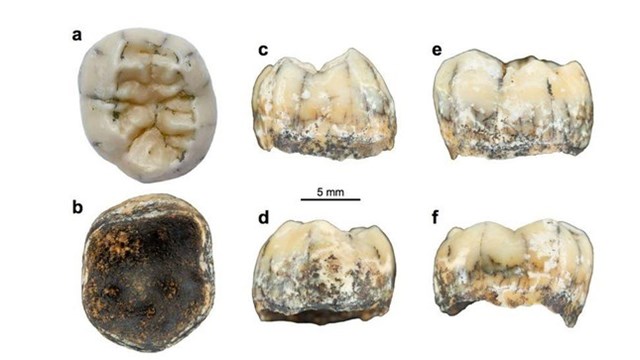“This indicates Denisovans lives in a wide variety of environments and latitudes and can adapt to extreme conditions, from the frigid mountains of the Altai (in Russia) and Tibet to the rainforests of Southeast Asia,” co-authors said. study author Clément Zanolli, a paleoanthropologist at the University of Bordeaux in France.
“Genetic studies indicate that Denisovans were adapted to high altitudes and cold climates, but we now also know that they lived in warmer, wetter climates and at high altitudes,” added Zanolli. high and low”.

Although modern humans, Homo sapiensis currently the sole surviving member of the genus Homo among other human lineages that have ever lived on Earth.
The closest extinct relatives of modern humans include the Neanderthals of Europe and Asia and the new Denisovan lineage found in Asia and Oceania.
Previous research estimated the ancestors of modern humans diverged about 700,000 years ago from the lineage that gave birth to Neanderthals and Denisovans, and that the ancestors of Neanderthals and Denisovans split about 400,000 years ago.
However, analysis of the genetic fossils of these extinct lineages shows that they were still close enough to interbreed with modern humans.
Information about the Denisovans is still a mystery. So far, researchers have only discovered 5 fossils with a certain connection: 3 tooth upper jaw, a finger bone and a jawbone. This greatly limits what researchers know about human lineages in general.
Recently, scientists discovered a skull in China called “Dragon Man” that confirmed it belonged to a newly found species, Homo longi, however many other researchers doubt it may be possible. the Denisovan skull.
Exactly where the Denisovans lived is debated among scholars. The fossils unearthed so far have all come from the Asian continent, but previous genetic evidence suggests that the people of Oceania and the islands of Southeast Asia belonged to Denisovan lineage.
Now, the newly discovered tooth may be the first fossil evidence of Denisovans in Southeast Asia.
Study co-author Fabrice Demeter, a paleontologist at the University of Copenhagen, said: “Any additional fossils described as Denisovan are relevant for a better understanding of early human evolution history”.
Scientists discovered the tooth in 2018 at a site known as the Cobra Cave in Laos’ Annamite Mountains, whose entrance is located about 34 meters above the ground.
The limestone cave, called Tam Ngu Hao 2, was found because of its proximity to another site where previous research had unearthed ancient fossils of modern humans. (Cobra Cave also includes fossils of animals, such as rhinoceros, tapir, and sambar deer.)
This tooth is an undeveloped molar on the left side of the lower jaw. This suggests it belonged to a girl about 3.5 to 8.5 years old. Analysis of the dirt and rock around the tooth with X-rays and time analysis measures, this molar is between 131,000 and 164,000 years old.
This tooth also differs from that of modern humans and Homo erectus, the first known human to use relatively sophisticated stone tools.
Although scientists cannot rule out it as belonging to a Neanderthal, they think it bears a close physical resemblance to a Denisovan specimen from China.
The new discovery may shed light on the different lines of people that can coexist. Neanderthals lived in Europe and western Asia at the same time as Denisovans occupied a large part of eastern Asia, along with other human groups such as Homo erectus, Homo floresiensis, Homo luzonensis, and modern humans.
However, it remains unclear when and where all of these extinct groups may have met.
at Blogtuan.info – Source: Soha.vn – Read the original article here



